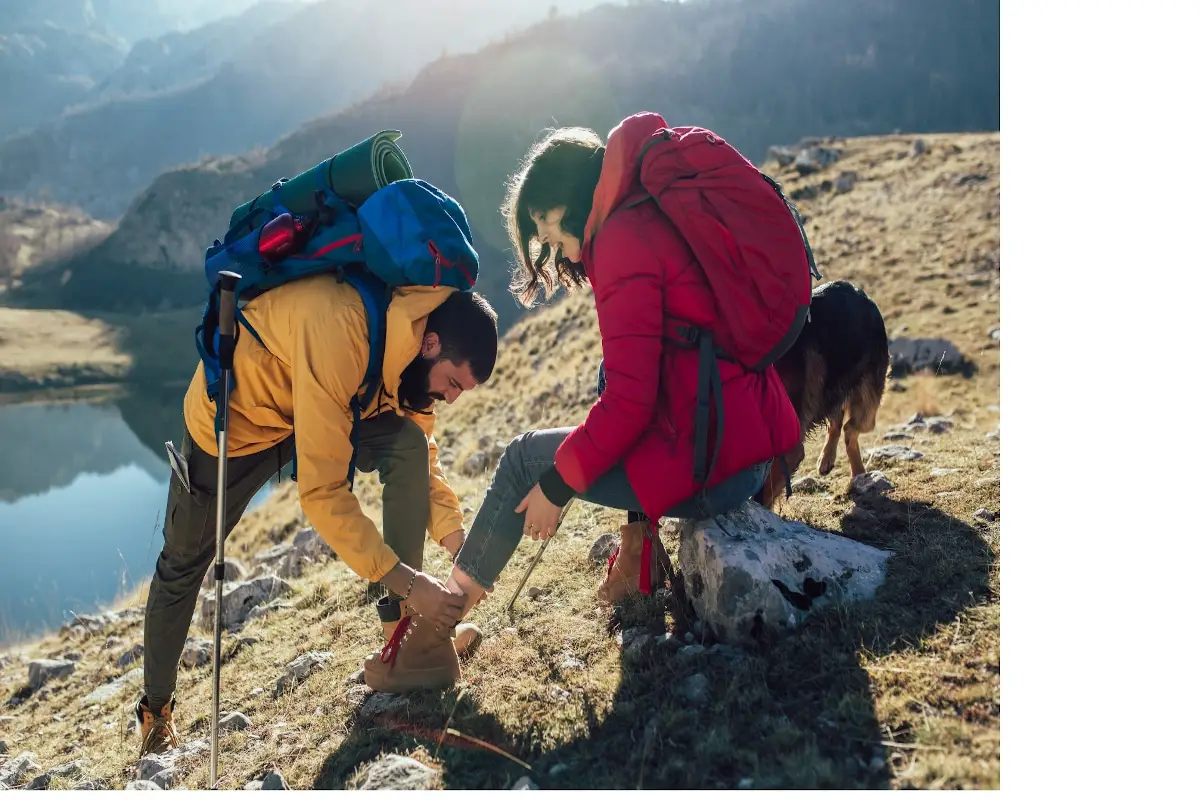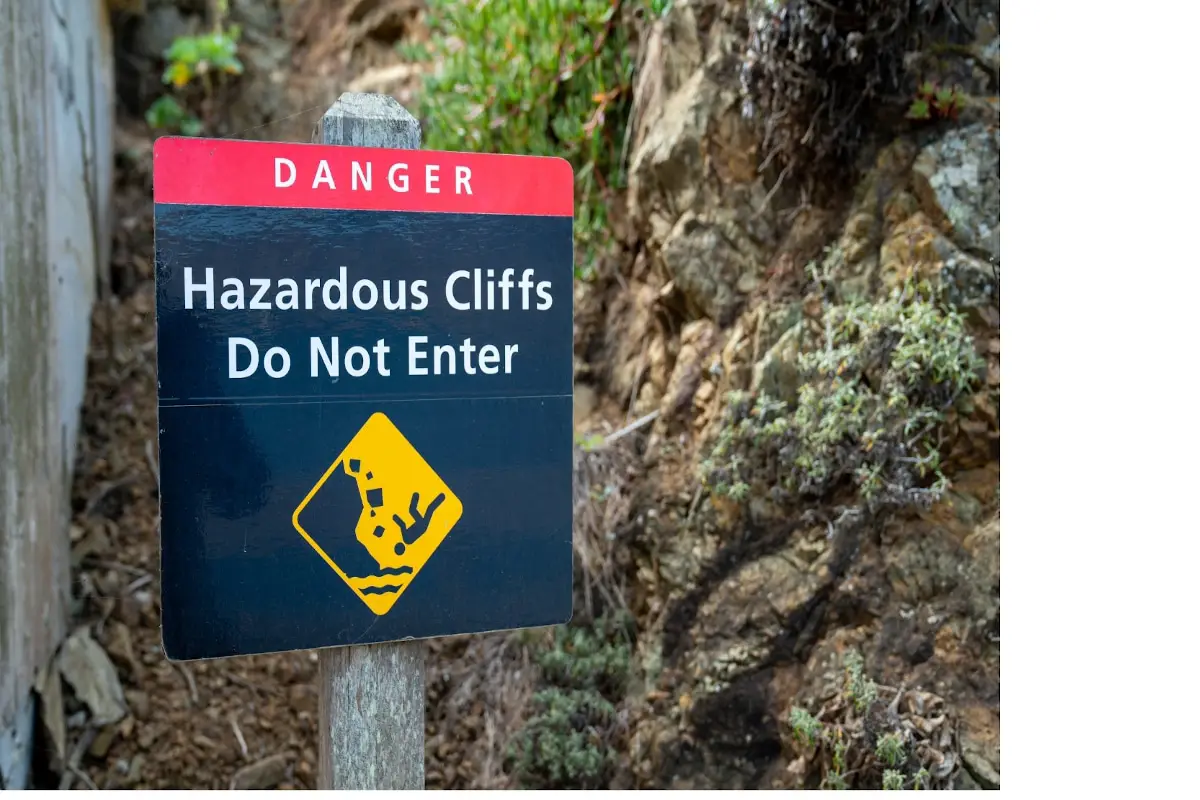Hiking can be a relaxing and fun way to exercise and enjoy the outdoors. However, this activity poses some risk of injury, some of which are significant.
Parts of Your Body Most At-Risk of Injury When Hiking
Nearly every part of the body is at risk of injury when hiking. These include:
- Ankles, Knees, Feet, Hips
- Hands and wrists
- Legs (bites, ticks, brush scrapes)
- Head (falling, branch strikes, rocks when hiking through caves)
- Back (falling, carrying extra weight with a backpack)
- Neck (carrying binoculars, bug bites)
- Stomach
Many injuries happen when you fall down and plant your hands, or try to grab a branch or outcrop. Injuries also happen when you are poked or cut by sticks and other debris. Losing your balance on the trail while carrying gear is another risk factor.
#1 Cuts, Scrapes and Scratches
These seem minor but can progress to an infection. These hurt but you can continue your journey once treated with a first aid kit. These are probably the most common type of hiking injuries just because of all the brush and tree branches around that are possibly unavoidable.

#2 Blisters
These can happen on the bottom and back of the foot and ankle. If you wear an uncomfortable shoe or hiking boot for too long on the trail, you could form painful blisters that hinder your ability to move. Blisters are not life-threatening unless they slow your movement enough to keep you from being able to exit the trail before sunset or bad weather arrives.
#3 Bruises
Falling to the ground, tripping on sticks or rocks, or bumping into a tree trunk can cause bruises to hikers. Always be careful while hiking and you can avoid these fairly easily. Bruises hurt, but are not life-threatening.
#4 Broken Bones
Depending on your age, a fall while hiking can lead to broken bones. Placing your hand on the ground while slipping on loose dirt or rocks can lead to a broken arm, hand, or wrist. Nearly every area of your body has bones that can be broken from a hiking accident. These can be very serious and life-threatening on the trail depending on which bone is injured.
#5 Torn Ligaments
Tearing ligaments in the knees, ankles, shoulders, or wrists can happen
while hiking. Falling and twisting the knee is a serious injury that
can prevent a lone hiker from making it out of the woods safely and receiving necessary medical attention. This can compound the danger of the situation. Torn ligaments are very serious injuries that may require surgery to fix.
#6 Torqued Back
Back injuries are no joke and can be very painful. Its important to stretch and always maintain your balance. The last thing you want to do is have a back injury as they are hard to treat effectively. We rely on our backs to carry us and keep us upright in daily activities and an injured back can compromise your life off the trail.
You can hurt your back by carrying too much gear, losing balance and falling, or tripping and tumbling to the ground. Make sure to get into shape if you are planning to carry extra gear on your back on a long hike.
#7 Dehydration
Not drinking enough water, or bringing enough water can lead to dehydration. Avoid bringing sodas and sugary drinks on the trail. The hotter it is outside, the more water you need to drink while hiking. There are serious consequences to dehydration if it is not treated quickly enough.
#8 Frostbite
Hiking without adequate cold weather boots, socks, and thermals can lead to frostbite. Hiking in cold weather or snowy conditions and even being delayed or stuck on the trail when temperatures drop can lead to this injury. Frostbite is serious and can even lead to permanent disability.
Wearing warm socks, cold weather boots, and thermals can help prevent this. Frostbite can form on any exposed surface of the skin such as the hands and face. It can also form on unexposed parts of the body including the feet and toes.
#9 Exhaustion (Bonking)
Hikers need to also be well-rested before heading out so they have the energy and mental acuity to stay alert on the trail. Being tired may affect one’s balance and ability to stay upright while hiking, as well as being able to reach your destination on time.
Not eating properly or bringing enough or the right snacks with you can lead to hunger and exhaustion. Always pack an adequate lunch if you plan on spending the day on the trail. Getting delayed and not having enough food to keep your energy up can pose a serious problem while hiking. Having extra snacks available just in case is also a good idea.
#10 Hiking Injuries To Children
Children like to explore, so they often go off the beaten path. This can bring them in contact with rocks, tree roots, small mammals, snakes and insects. Children can sustain injuries while hiking because they are less aware of the risks around them, and so much more full of energy to explore. If you take children with you, make sure to keep an eye on them and set limits and boundaries to their activities.
Ways to Prevent Hiking Injuries
~1 in 15,000 hikers annually is seriously injured (or worse) each year. Preventing hiking injuries is easy if you follow some general guidelines and plan ahead for your trip. These include:
- Hike with others
- Pace yourself
- Always be mindful of the weather conditions
- Keep your time frames
- Follow any path and warning signs
- Take a map with you
- Bring plenty of water
- Take regular breaks

Avoid “Summit Fever”
When hiking, don’t get too attached to your destinations because daylight may run out or the weather can turn hostile. That waterfall or outlook that must-see has been there for millions of years and will still be there next time you go hiking.
Don’t let yourself be consumed by “summit fever” that can get you injured (or worse) when you would be best served by turning back and giving it a go on another day. This could be the difference between life and death, depending on the terrain. Your long-planned hiking excursion is not worth being seriously injured, so you must override your mind in this regard.
Always Listen To Your Body
Your body will give you warning signs that you are tired, dehydrated, or
need to take a break and stretch. Your body knows what it needs to do to
stay healthy and safe.
Pretty much every area of the body can be injured while hiking, but don’t let that stop you. The benefits of hiking outweigh the risk of injury as most of these can be prevented by being alert and careful on the trail.
